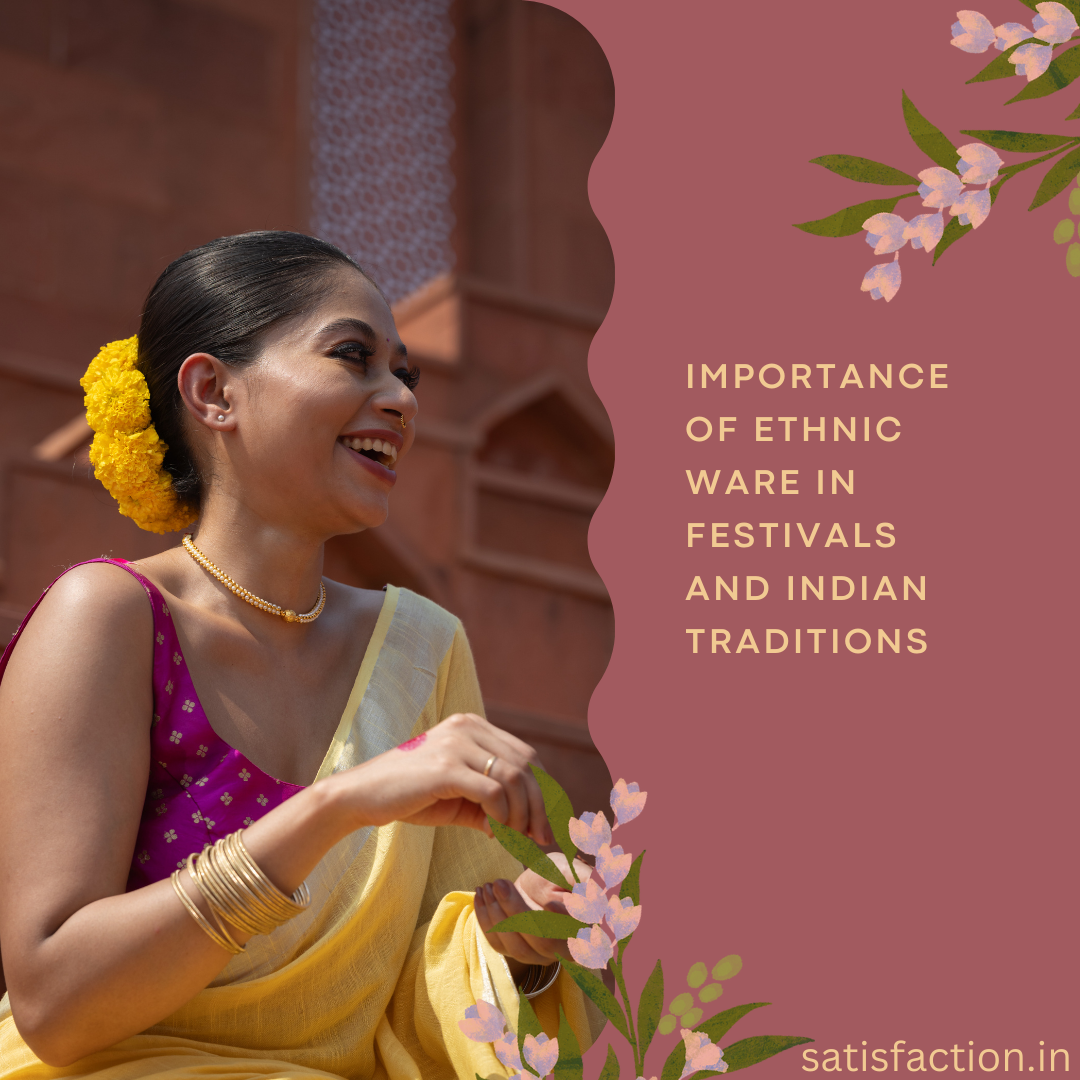India’s rich cultural heritage is intricately woven into its traditions, and nowhere is this more evident than in its ethnic wear. From the graceful saree to the vibrant lehenga choli, ethnic wear is not just a clothing choice; it is a representation of India’s deep-rooted customs and values. Let’s explore the significance of traditional Indian clothing and how it continues to be an essential part of Indian culture and festivals.

1. Ethnic Wear: A Reflection of India’s Cultural Diversity
India’s vast cultural landscape is reflected in its ethnic wear. Every region has its distinct clothing styles – be it the Banarasi sarees of Varanasi, the Punjabi salwar kameez, the Rajasthani lehenga choli, or the Kanchipuram sarees from Tamil Nadu. Each garment tells the story of its region, showcasing unique weaving techniques, fabrics, and designs that have been passed down through generations. By wearing these traditional outfits, Indians honor their roots and the diversity that defines their nation.
2. Indian Traditions and Their Influence on Ethnic Wear
India’s traditions are deeply intertwined with its ethnic clothing. Many customs and rituals, especially during festivals and weddings, require people to wear specific garments. For example, during Hindu weddings, brides often wear red or maroon lehenga cholis or sarees, symbolizing prosperity and fertility. Similarly, during religious festivals like Diwali, people wear new ethnic clothes to symbolize fresh beginnings and ward off negative energies. This connection between tradition and clothing is what makes ethnic wear a vital part of Indian ceremonies.
3. The Role of Ethnic Wear in Indian Festivals
Indian festivals are incomplete without ethnic wear. Whether it’s Navratri, where women adorn themselves with vibrant chaniya cholis and men wear colorful kurta pajamas, or Eid, where families don stunning embroidered sherwanis and salwar kameez for the celebrations – ethnic wear adds an authentic, festive vibe. These outfits are not only about looking good; they represent the joy, unity, and cultural richness of Indian festivals.
4. The Symbolism of Colors in Ethnic Wear
Colors play a significant role in Indian ethnic wear, each having its own symbolism in various traditions. Red represents marriage and fertility, white symbolizes purity and peace, while yellow is associated with happiness and spirituality. These colors are carefully chosen for ethnic wear during rituals, festivals, and ceremonies, making traditional clothing an important aspect of expressing values and beliefs in Indian culture.

5. Modern Ethnic Wear: A Blend of Tradition and Trend
In recent years, ethnic wear has evolved to embrace contemporary styles while staying rooted in tradition. The rise of Indo-western fashion has brought a fresh twist to traditional attire, blending the elegance of ethnic wear with modern design elements. Today, ethnic fusion wear has become popular among younger generations, allowing them to express their heritage while keeping up with current fashion trends. This has made ethnic wear more accessible and versatile for all occasions
Conclusion
Ethnic wear is much more than just fashion in India – it is a connection to the country’s rich traditions and cultural heritage. From religious ceremonies to grand weddings, traditional clothing has a special place in the hearts of Indians. As a celebration of India’s diversity and craftsmanship, ethnic wear continues to be an integral part of Indian life.
Explore our exclusive range of ethnic wear for ladies at Satisfactions.in where tradition meets style. Discover the finest sarees, lehengas, and salwar suits that reflect the beauty of Indian culture.
